- Home
- Neal Asher
Line War ac-5 Page 12
Line War ac-5 Read online
Page 12
Vengeance?
Yes, she was using her power to exact vengeance for the murder of her two brothers but, just like her destruction of the USER, there would be additional benefit. In this case she would prevent huge loss of life by destroying a powerful inimical being.
Before entering the airlock she initiated closure of her spacesuit — the visor and segmented helmet rising up simultaneously out of the neck ring and sealing together. The war runcible, though it had been constructed to be inhabited by humans, had long been filled with inert gas in order to preserve it. The lock opened directly into a docking tunnel, which in turn connected to one of the many box-section corridors that burrowed through the runcible’s structure. The gravplates in this section were online at half a G, causing her to drop abruptly to the floor. Checking through the runcible’s computer network she found that the drones were located where she wanted them to be, and set out with long bouncing strides. Soon she arrived at an even wider corridor — one used for transporting heavy equipment — and next she stood before open doors that exposed glints of metallic movement inside. She entered.
Knobbler was, unsurprisingly, a brute, typical of the type of drone that usually wanted to manifest as something nasty, and overendowed with limbs. He looked like the bastard offspring of an octopus and a fiddler crab, with a definite admixture of earth-moving equipment in his ancestry. His main body was a couple of yards across and as many deep, with a sharp rim just like that of a crab and, also like a crab, this body possessed his main sensorium, including disconcerting squid eyes. The body was also mackerel-patterned — indicating now-inactive old-style chameleonware. Extending below and behind the body was a tail resembling the abdomen of a hoverfly, which he could fold up conveniently against his underside. From the juncture between these sections sprouted numerous heavy and partially jointed tentacles, some supporting him off the floor, others up and groping through the air, but all terminating in the tools of his one-time lethal trade. She gazed around at the others now gathered in this big and slightly archaic engine room. The war drone’s companions were a collection of phobic nightmares, including large versions of a scorpion, a hissing cockroach, a devil’s coach-horse and other forms less easy to equate with a single species. And she understood that, no matter how fast she might react informationally, they could now easily kill her if they so chose.
They did not so choose. They appeared, in fact, rather enamoured of her plans.
‘It’s good to see you all face-to-face,’ she said.
That elicited a rapid exchange of jokes, story fragments and what could only be described as electronic titters. It was a given that old war drones like these were often more human than some humans these days, and certainly possessed a keener sense of humour. The only problem was that what they might find amusing, most humans would certainly not.
‘I’ll not spend time on waffle, because our time is short.’ While transmitting subtexts and back-up information packages to her narrative, she continued. ‘It will take seventy hours for the nearest ECS attack ship or dreadnought to reach us. Before then we need to get these engines running.’
Spaced evenly about inside the runcible were five U-space engines. She had already assessed them and found that two needed much remedial work, this massive conglomeration of units that was the U-space drive here being one of them.
‘Getting them running isn’t the main problem,’ replied Knobbler, acting as spokesman for the rest, ‘but getting them balanced will be.’ For emphasis he snapped one long razor-edged claw at the air. It looked perfectly designed for peeling open Prador carapaces to tear out what lay inside.
‘They need a controlling intelligence now the runcible AI has gone,’ observed Orlandine, adding, ‘That will, as you know, be only a temporary position, until I myself am ready to assume it.’ She was carefully scanning her audience on many levels. During the war itself none of them would have been of any use in the role she was now suggesting, but throughout the ensuing years they had all grown in experience, knowledge and wisdom, and they had since then all availed themselves of memory and processing capacity bolt-ons. Even so, half of them were still of little use: they were faulty at their core and would waver under the exigencies of processing the higher maths required for both runcible and U-space operation. Running their specs through filtering programs she came up with three best candidates. One was Knobbler itself, another was the one shaped like a huge bedbug, which named itself Bludgeon, and the last was the one that resembled a preying mantis fashioned out of razor blades — who was named, inevitably, Cutter.
The implication of her last statement was not lost on the drones. They began one of those fast debates of theirs, into which Orlandine interjected her own selection. Within a few seconds they had decided on Bludgeon for the task. The drone had been acting as a signal relay for some time, when not otherwise engaged in its hobby of creating multidimensional geometries. It was the perfect choice. The bedbug ambled forward, lifted its blind head towards her and awaited further instructions.
‘Before we get to work, there is one more thing I have to add.’ She now addressed them all. ‘You understand my objectives and you relish the prospect of action, but I want it to be clear that you understand the risk.’
‘We understand,’ said Knobbler. ‘We were made disposable.’
Orlandine gazed at the heavily armoured killer.
‘Yes, quite.’
* * * *
The Golem Azroc strode out onto one floor of the newly completed Hedron aboard Jerusalem and gazed around. Hanging in space in the centre of this dodecahedral chamber was a holographic projection in a perpetual state of flux, constantly dividing into segments showing different spacial scenes — star systems, close-up views of planets, space stations, ships travelling through void — and different maps, logic trees, graphs, schematics. It was a mass of visual information changing too fast for the unaided mind to comprehend, but there weren’t any unaided minds present.
Surrounding this hologram, on every inner face of the chamber, were gravplated surfaces. On the one Azroc now strode out upon were concentric rings of consoles occupied by humans, Golem and haimen. Two other inner faces, or floors, were similarly occupied, while others were empty or occupied by only one or two figures. Throughout this chamber, holographic ship avatars appeared and disappeared, as conferences were conducted on the physical as well as the virtual level. Massive quantities of information were being shunted back and forth, and then acted upon: ship movements, defensive capabilities of vulnerable worlds, weapons-manufacturing statistics — the whole complex logistical web of this current Line war.
Earth Central and all the high-level AIs within the Polity had been preparing for something like this, but at present it was still considered a ‘local matter’. For Erebus had attacked a fleet outside the Polity and until now had shown no sign of doing anything else. No one quite knew what Erebus intended, for its actions thus far had seemed rather illogical. Remembering friends who had died, Azroc did not look upon the matter so coolly. Indeed, Azroc the Golem had discovered emotion within himself, welling up from somewhere below emulation, when he had found his friend roasted in a shuttle that had not even managed to escape the bay of the dreadnought Brutal Blade during Erebus’s assault.
‘So something has happened at last?’ he enquired of the air.
‘Certainly,’ Jerusalem replied.
‘And why am I here?’ Azroc asked.
‘You are here for your input.’
‘Really.’
Azroc knew himself to be substantially more intelligent and much faster of thought than any base-level human. He also knew that most humans viewed Jerusalem as something almost supernal and beyond understanding. It was all about orders of magnitude really: humans to Jerusalem were as fleas to an elephant, whereas Azroc placed his own elevation at about that of a cockroach. And now Jerusalem wanted his input? Azroc would have laughed if he hadn’t totally misplaced his sense of humour aboard the Brutal Blade.
‘What is the situation thus far?’ he asked aloud, like any unaugmented human.
‘We prepare for conflict but don’t know where or what form it will take,’ Jerusalem replied.
‘Any idea of where Erebus is now?’
‘We have tracked down certain parts of the entity…’
‘Those being?’
‘Perhaps you should head for the big screen to your left?’
Azroc looked over at the adjacent floor of the Hedron, angling up from this one. Positioned upon it was a blank ten-foot-square screen, next to a platform composed of metal gratings upon which had been bolted a single empty chair and beside which stood a Golem hand interface — a narrow pillar topped by a sphere inset with the imprint of a skeletal hand. He strode over, stepping across the join between floors, and mounted the platform to head for the seat. Once ensconced there he felt a moment’s annoyance: here he was, just another component slotted into place in whatever machine Jerusalem was creating.
‘One of Erebus’s wormships attacked the planet Cull, where it destroyed all the human-sleer hybrids,’ Jerusalem informed him, as the screen began showing these same events.
Azroc frowned, then sent internal instructions to his syntheskin covering. The skin of his right hand internally detached itself, wrinkled for a moment, then puffed up, a split opening around the wrist. From this split he stripped off the syntheskin layer, like a fleshy glove, to reveal the gleaming skeletal hand underneath, which he then placed in the imprint in the sphere. After a moment, a connection established through the pseudo-nerves in his hand: it was a simple two-way connection, not a multitasking link. Through this he could either receive or request information from the AI, but no more than that. Jerusalem was deliberately isolating him from the webworks of data exchange all around, making him a devil’s advocate, someone with a divorced point of view — oversight without involvement. This was a technique often used by AIs when dealing with complicated situations. Jerusalem clearly wanted another point of view, maybe someone who could see the wood rather than the trees.
An information packet suddenly arrived, and it felt like his hand was burning until he applied translation programs to the stream of data coming up through his finger nerves. It simply detailed the events at Cull, but without any interpretation of them.
‘An attack either to mislead or to remove a danger,’ he announced. ‘But how could the hybrids be a danger to Erebus?’
‘There is evidence that they would show the same resistance to being hijacked by Jain-tech as dracomen do.’
‘I see. And were the dracomen similarly attacked?’
Another information packet came through detailing the worm-ship attack on Masada.
‘I would say that Erebus feels it has resources to squander,’ said Azroc.
The pause before Jerusalem’s reply was infinitesimal, but it nevertheless gave the Golem some satisfaction.
‘Why do you say that?’ Jerusalem’s question, of course, was a politeness, for in that minuscule pause the AI would have already worked out Azroc’s reasoning. However, the Golem then experienced a brief moment of confusion, for surely Jerusalem should have worked this out a microsecond after the first attack by Erebus. Was the AI now playing the kind of games with him it usually reserved for humans? What was its purpose in pretending to only understand this matter now? Azroc did not know and felt even more like a mere cockroach.
‘After its attack upon the hybrids,’ he said, ‘Erebus should have known we would work out exactly where it would strike next. It should also have known the precise disposition of Polity ships in the area, and realized what the level of our response would be. Obviously you yourself will be able to make a more accurate calculation than I can, but I would reckon the chances of success of the second attack, with just one ship, were little better than 50 per cent, with a somewhere above 90 per cent chance of the wormship being destroyed whether it was successful or not. Erebus was clearly prepared to sacrifice one of its ships with those odds, therefore has ships to squander. But then I saw that during the attack on the Polity fleet.’
Yet another information packet arrived. Azroc studied it and was puzzled.
‘Perhaps this was intended to draw your eye away from its other two attacks? Or perhaps the other two attacks were to draw your eye away from this one? Certainly there could be no special resistance to Jain-tech on a world like that.’
Jerusalem now informed him, ‘I have received a transmission from the agent investigating this incident. It would seem that a legate landed on that world…’
The screen now showed an image file of the said legate, first at the city of Hammon then later at the ranch house where it murdered the two humans.
‘Who were they?’ Azroc asked.
‘We do not yet know. Evidence of their identities was deliberately erased.’
‘I see. And the wormship, it escaped?’
‘There was nothing there to prevent its attack or to stop it leaving.’
Very puzzling, all of this, but then the actions of this Erebus had been puzzling from the very start. He tried to make some sense out of all this. That many more-powerful minds than his own, with greater access to processing power and numerous data sources, were working on the same problem did not impinge. They would all be thinking in a very similar way, while he, being outside their box, would have to think there.
‘The wormship at Masada was destroyed. The one at Cull was severely damaged but it escaped — so did you track it down?’ he asked.
‘It was dealt with,’ the AI replied curtly. ‘I was considering sending a mission there to see if any useful information could be obtained.’
‘I doubt it.’ Azroc tried to stay outside that box. ‘Anything else there?’
‘Nothing relevant.’
‘So what else do you have?’
Now the screen divided into four, first showing four distinct suns — bar codes along the bottom of each screen division giving their spectra — then next flicking to various positions in those relevant solar systems. The first showed the face of a gas giant, a swarm of fifty wormships drifting across it in silhouette. The second showed a similar number of ships scattered throughout an asteroid field. In the third they were orbiting a gas giant, and in the fourth they formed a ring around a small hot planetoid in close orbit about a sun.
‘These four squadrons of wormships have been discovered, so far, and resources are already being moved into place to counter them. They appear to form part of a general pattern of attack.’
‘If you could elaborate?’
‘The fourth of these to be discovered was only found by making predictions from the first three. The first three were all located near inner Line worlds with human populations above one billion, and all within a hemispherical section of the border a thousand light years across.’
‘Again this makes little sense… unless you go back to supposing that Erebus is careless of resources, and therefore considers its forces so overwhelming that conventional logistics and battle plans are irrelevant.’
‘Ah,’ said Jerusalem. ‘Even as we speak another group of fifty wormships has been discovered within the border area.’
The screen divisions disappeared to be replaced by an image of wormshi
ps hurtling through void, only stars visible behind them. The point of view tracked them for a while, then the picture whited out, and the clip returned to the start.
‘A watch station, now no longer able to watch,’ observed Jerusalem, adding, ‘And more.’
The screen again divided, this time into six views including those Azroc had seen first. The extra two views were of the one he had just observed and another showing wormships tumbling above a regolith horizon. Then came further divisions. Azroc watched as the original views were consigned to the left-hand upper comer of the big screen, as more and more came in. Within half an hour there were eighteen confirmed sightings, and Polity vessels were searching for more — for it seemed a certainty there would be more.
‘They’re not attacking?’ he finally queried.
‘I really wish I could answer yes to that,’ Jerusalem replied. ‘However, bombardment of at least two worlds has already commenced.’
* * * *
Vulture perched on the console of the Harpy. Both Vulture and this ship’s AI had been named after winged beasts (though of course only Vulture itself had truly become one), but such a similarity in names was nearly the only common ground they shared. Despite his present form as a bird, Vulture could still communicate on AI levels, and of course had tried striking up a conversation with Harpy.
Easier to strike up a conversation with an abacus.
Vulture had once been the AI of a little ship like this one, owned by similarly dubious characters but, by contrast with the thing controlling this vessel, Vulture had been a Polity AI with a powerful and complex mind and some vague adherence to Polity principles.
‘So how are you doing?’
‘Question object confusion.’

 The Bosch: A Novella (Polity Universe)
The Bosch: A Novella (Polity Universe)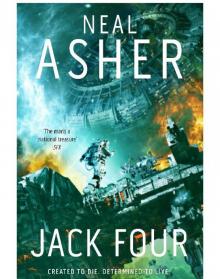 Jack Four
Jack Four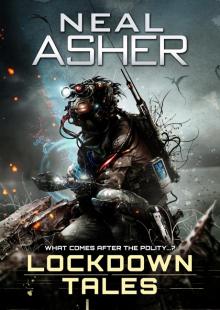 Lockdown Tales
Lockdown Tales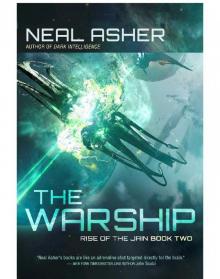 The Warship
The Warship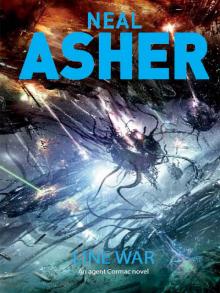 Line War
Line War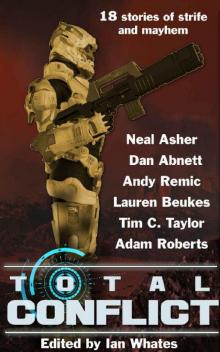 Total Conflict
Total Conflict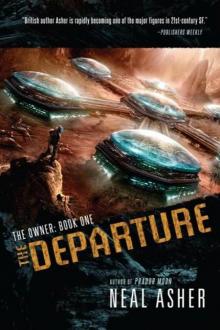 The Departure
The Departure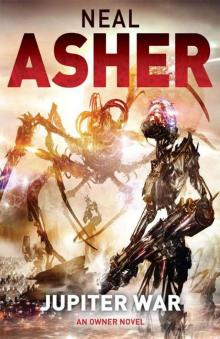 Owner 03 - Jupiter War
Owner 03 - Jupiter War Polity Agent
Polity Agent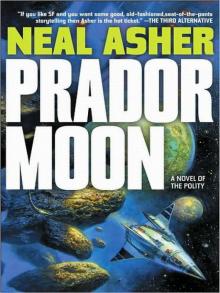 Prador Moon
Prador Moon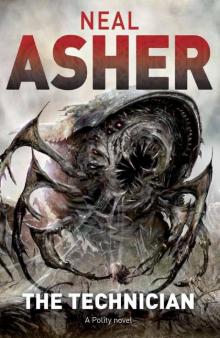 The Technician
The Technician Hilldiggers
Hilldiggers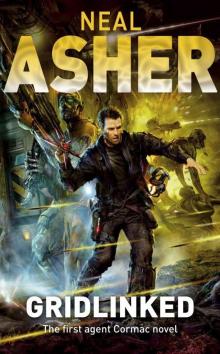 Gridlinked
Gridlinked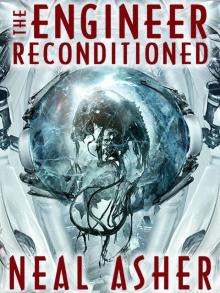 The Engineer ReConditioned
The Engineer ReConditioned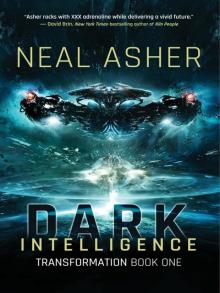 Dark Intelligence
Dark Intelligence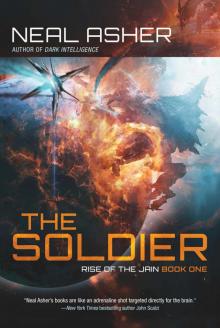 The Soldier: Rise of the Jain, Book One
The Soldier: Rise of the Jain, Book One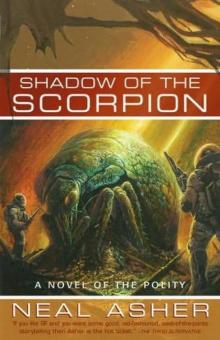 Shadow of the Scorpion p-2
Shadow of the Scorpion p-2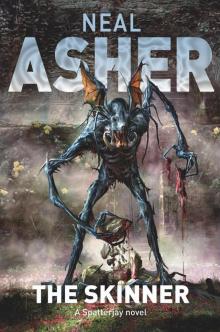 The Skinner
The Skinner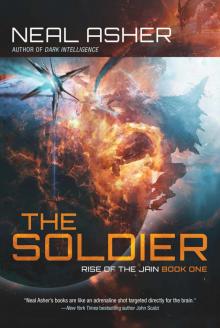 The Soldier
The Soldier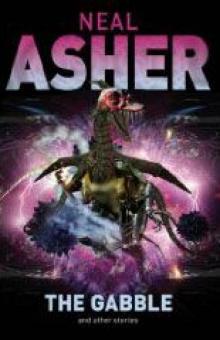 The Gabble p-13
The Gabble p-13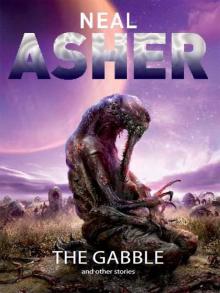 The Gabble and Other Stories
The Gabble and Other Stories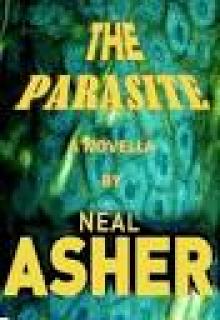 The Parasite
The Parasite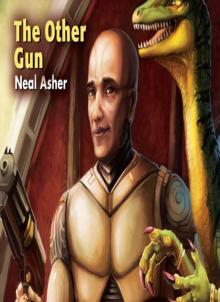 The Other Gun
The Other Gun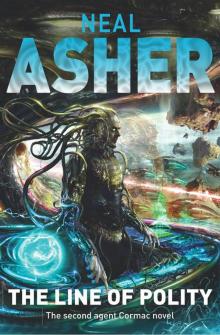 The Line of Polity
The Line of Polity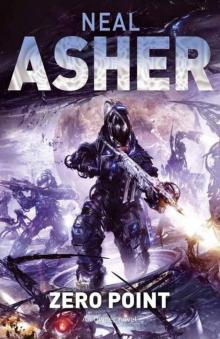 Zero Point (Owner Trilogy 2)
Zero Point (Owner Trilogy 2)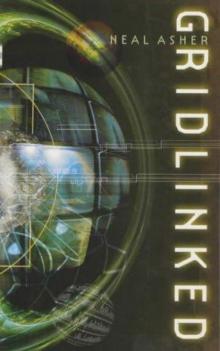 Gridlinked ac-1
Gridlinked ac-1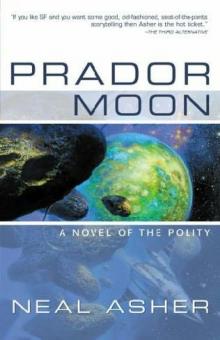 Prador Moon p-1
Prador Moon p-1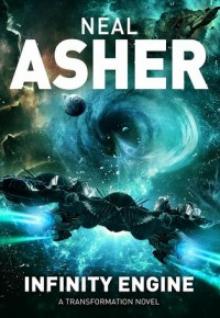 Infinity Engine
Infinity Engine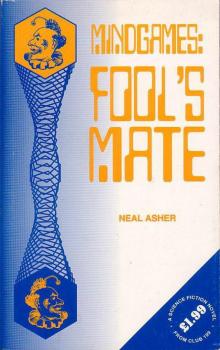 Mindgames: Fool's Mate
Mindgames: Fool's Mate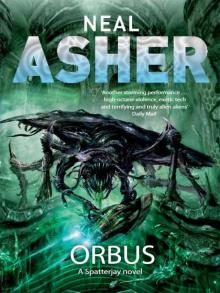 Orbus
Orbus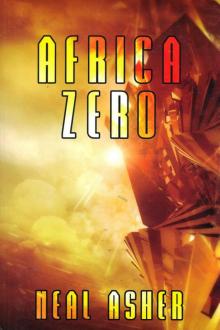 Africa Zero
Africa Zero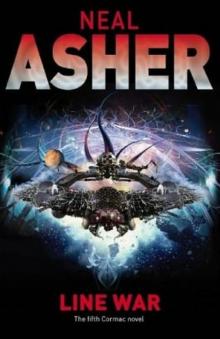 Line War ac-5
Line War ac-5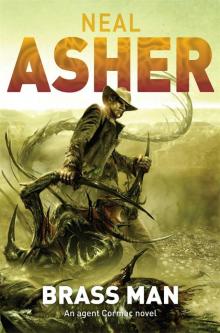 Brass Man
Brass Man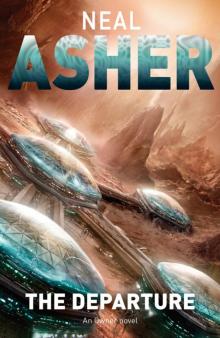 The Departure to-1
The Departure to-1 Cowl
Cowl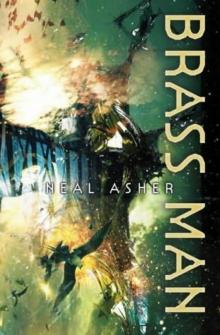 Brass Man ac-3
Brass Man ac-3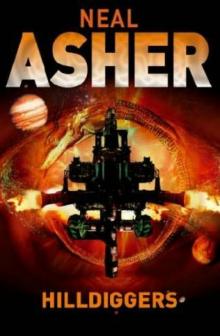 Hilldiggers (polity)
Hilldiggers (polity)![Greg Bear - [Eon Trilogy 1] - Eon (rescan) (v1.0) Read online](http://i1.bookreadfree.com/i2/04/08/greg_bear_-_eon_trilogy_1_-_eon_rescan_v1_0_preview.jpg) Greg Bear - [Eon Trilogy 1] - Eon (rescan) (v1.0)
Greg Bear - [Eon Trilogy 1] - Eon (rescan) (v1.0)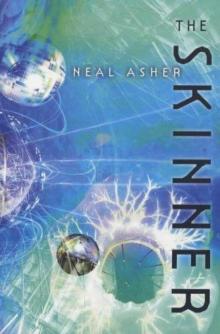 The Skinner s-1
The Skinner s-1 The Voyage of the Sable Keech s-2
The Voyage of the Sable Keech s-2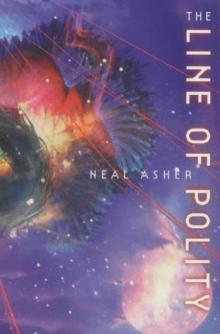 The Line of Polity ac-2
The Line of Polity ac-2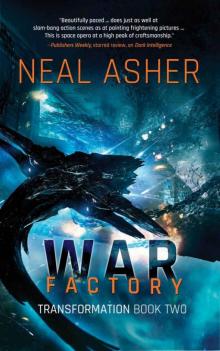 War Factory: Transformations Book Two
War Factory: Transformations Book Two Polity Agent ac-4
Polity Agent ac-4